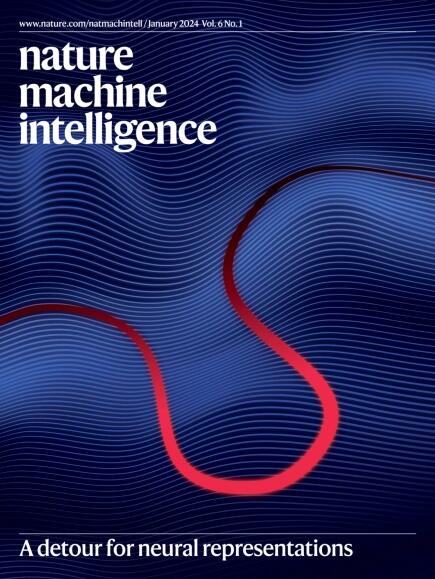Interpretable weather forecasting for worldwide stations with a unified deep model
IF 18.8
1区 计算机科学
Q1 COMPUTER SCIENCE, ARTIFICIAL INTELLIGENCE
引用次数: 2
Abstract
Automatic weather stations are essential for fine-grained weather forecasting; they can be built almost anywhere around the world and are much cheaper than radars and satellites. However, these scattered stations only provide partial observations governed by the continuous space–time global weather system, thus introducing thorny challenges to worldwide forecasting. Here we present the Corrformer model with a novel multi-correlation mechanism, which unifies spatial cross-correlation and temporal auto-correlation into a learned multi-scale tree structure to capture worldwide spatiotemporal correlations. Corrformer reduces the canonical double quadratic complexity of spatiotemporal modelling to linear in spatial modelling and log-linear in temporal modelling, achieving collaborative forecasts for tens of thousands of stations within a unified deep model. Our model can generate interpretable predictions based on inferred propagation directions of weather processes, facilitating a fully data-driven artificial intelligence paradigm for discovering insights for meteorological science. Corrformer yields state-of-the-art forecasts on global, regional and citywide datasets with high confidence and provided skilful weather services for the 2022 Winter Olympics. Worldwide weather station forecasting is challenging because of high computational costs and the difficulty of modelling spatiotemporal correlations from partial observations. Wu et al. propose a transformer-based method that can reconstruct such complex correlations from scattered weather stations, leading to efficient and interpretable state-of-the-art forecasts.

统一深度模式的全球气象站可解释天气预报
自动气象站对精细天气预报至关重要;它们几乎可以建在世界各地的任何地方,而且比雷达和卫星便宜得多。然而,这些分散的站点只能提供受连续时空全球天气系统支配的部分观测数据,因此给全球预报带来了棘手的挑战。在此,我们提出了具有新型多重相关机制的 Corrformer 模型,它将空间交叉相关和时间自相关统一到一个学习型多尺度树结构中,以捕捉全球时空相关性。Corrformer 将时空建模的典型双二次方复杂性降低为空间建模的线性和时间建模的对数线性,在一个统一的深度模型中实现了数万个站点的协同预测。我们的模型可以根据推断出的天气过程传播方向生成可解释的预测,从而促进完全由数据驱动的人工智能范式,为气象科学发现真知灼见。Corrformer 可在全球、区域和城市数据集上生成高置信度的一流预报,并为 2022 年冬奥会提供了娴熟的气象服务。全球气象站预报具有挑战性,因为计算成本高,而且很难从部分观测数据中模拟时空相关性。Wu 等人提出了一种基于变换器的方法,可以从分散的气象站重建这种复杂的相关性,从而得到高效且可解释的最先进预报。
本文章由计算机程序翻译,如有差异,请以英文原文为准。
求助全文
约1分钟内获得全文
求助全文
来源期刊

Nature Machine Intelligence
Multiple-
CiteScore
36.90
自引率
2.10%
发文量
127
期刊介绍:
Nature Machine Intelligence is a distinguished publication that presents original research and reviews on various topics in machine learning, robotics, and AI. Our focus extends beyond these fields, exploring their profound impact on other scientific disciplines, as well as societal and industrial aspects. We recognize limitless possibilities wherein machine intelligence can augment human capabilities and knowledge in domains like scientific exploration, healthcare, medical diagnostics, and the creation of safe and sustainable cities, transportation, and agriculture. Simultaneously, we acknowledge the emergence of ethical, social, and legal concerns due to the rapid pace of advancements.
To foster interdisciplinary discussions on these far-reaching implications, Nature Machine Intelligence serves as a platform for dialogue facilitated through Comments, News Features, News & Views articles, and Correspondence. Our goal is to encourage a comprehensive examination of these subjects.
Similar to all Nature-branded journals, Nature Machine Intelligence operates under the guidance of a team of skilled editors. We adhere to a fair and rigorous peer-review process, ensuring high standards of copy-editing and production, swift publication, and editorial independence.
 求助内容:
求助内容: 应助结果提醒方式:
应助结果提醒方式:


